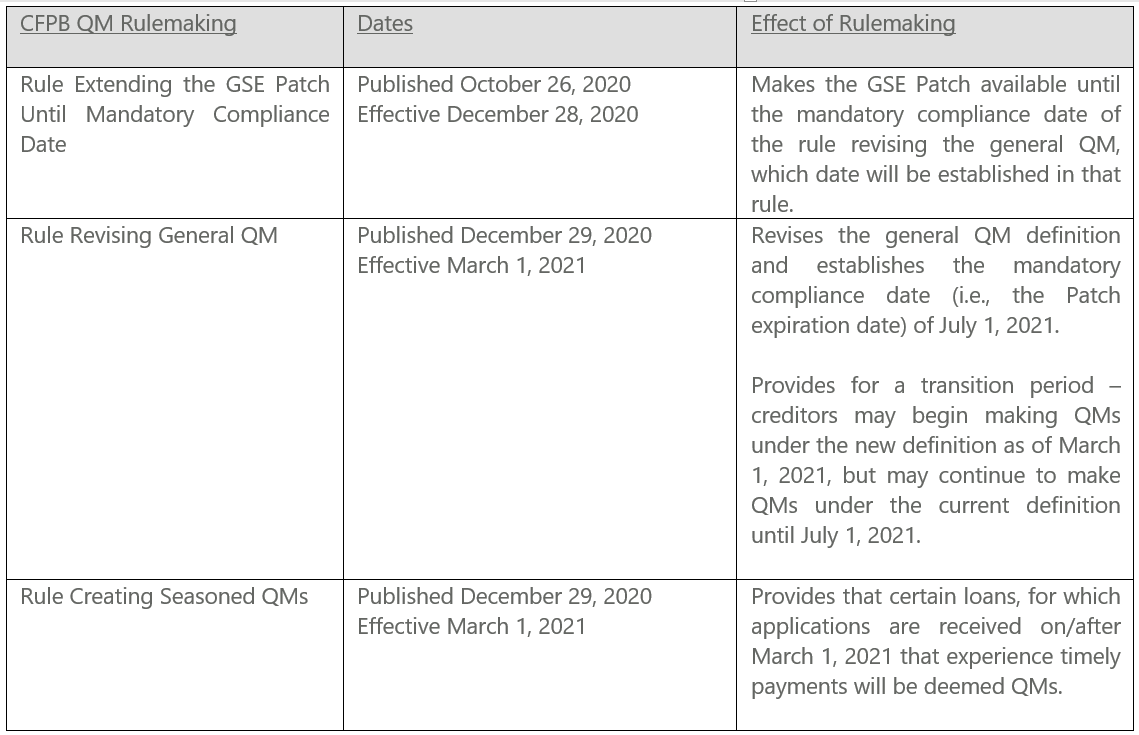The CFPB announced today that it expects to propose a rule to delay the July 1, 2021 date to comply with the new Qualified Mortgage (“QM”) rule.
The CFPB’s statement provides that the extension would allow lenders more time to make QM loans based on their debt-to-income ratio (and Appendix Q), or based on the
